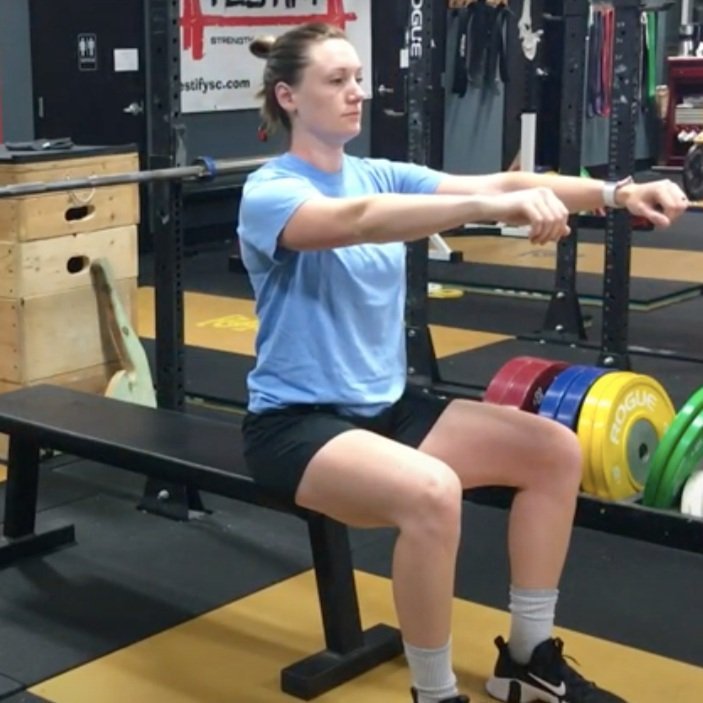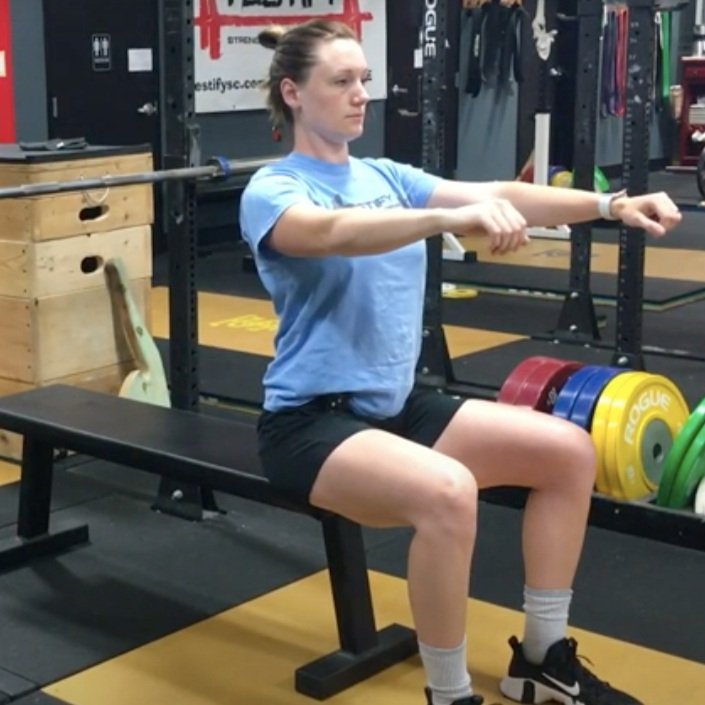Bench Press Cue: Pull Your Fists Back!
/Jordan’s arms are straight, but notice the position of her fists in the picture on the left versus the position of her fists in the picture on the right (i.e., with shoulders retracted).
(This article is a Blast from the Past article originally posted on 04/30/21.)
When we set up to bench press, we retract our shoulder blades before we start the movement. We do so as this process creates more stability (i.e., it creates a wider base of support on the bench itself) and puts us in a stronger and more efficient position from which to bench. It also has the added bonus of reducing the distance the bar has to travel throughout the lift.
However, lifters occasionally have a bit of trouble pulling their shoulders back into the proper position. Sometimes this is due to a lack of understanding of what this position looks and feels like, and sometimes it’s simply an inability to exert conscious control over something they can’t see. Either way, if you struggle to retract your shoulders blades, try cueing yourself to pull your fists back instead.
Compare the height of the barbell in the photo on the left (incorrect: fists not pulled back) with the height of the barbell in the photo on the right (correct: fists pulled back). For a reference point, look at the “Exit” sign in the background.
The cue “Pull your fists back” implies that - when you’re set up on the bench with the barbell locked out overhead on straight arms - you’re going to try to pull your fists back toward you as far as possible (i.e., as close to you as possible) without bending your elbows.
You can try this with or without a bar, and either way, you’ll find that you can actually pull your fists back toward you at least an inch or two, and having done so, you will have successfully retracted your shoulder blades into the correct position without having ever thought about your shoulders.
Pull your fists back the next time you set up on the bench - it will help you develop a stronger and more efficient bench press, and that’s always a good thing. If you’re interested in more tips to help your bench press, check out the included videos.
As always, we hope this helps you get stronger and live better.
-Phil
PS: Whenever you want even more Testify in your life, here are some free resources:
Book a free intro and strategy session with us HERE.
Pick up a free copy of Testify’s Squat Guide: 12 Tips to Improve Your Squat Now HERE.
Get our free weekly email - containing useful videos, articles, and training tips - HERE.
Follow Testify on Instagram HERE.
Subscribe to Testify’s YouTube channel HERE.
(Some links may be affiliate links. As an Amazon Associate, Testify earns from qualifying purchases.)










